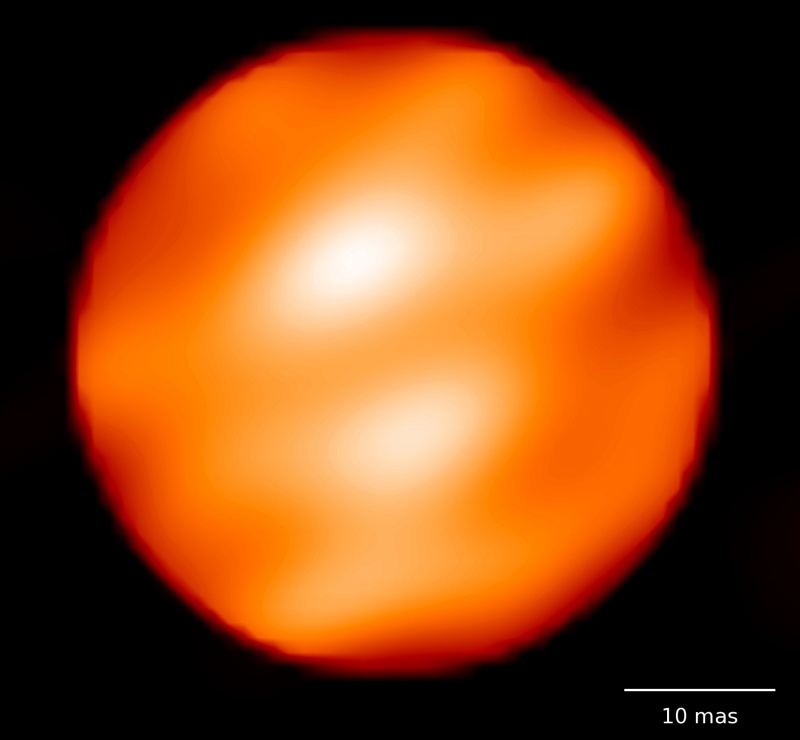
|
Credit & Copyright: Xavier Haubois (Observatoire de Paris)
et al.
Explanation:
Betelgeuse really is a big star.
If placed at the center of our Solar System it would extend
to the orbit of Jupiter.
But like all stars except the Sun,
Betelgeuse is so distant it
usually appears as a
single point of light, even in large telescopes.
Still, astronomers using
interferometry
at infrared wavelengths
can resolve the surface of Betelgeuse and
reconstructed this
image of the
red supergiant.
The intriguing picture shows two, large, bright, star spots.
The spots
potentially represent enormous
convective cells rising
from below the supergiant's surface.
They are bright because they're hotter than the rest
of the surface, but both spots and surface are
cooler than the Sun.
Also known as Alpha Orionis, Betelgeuse is about 600 light-years
away.
Note: An
APOD editor will review astronomy images of 2009,
hosted by the Amateur Astronomers Association of New York on Friday,
January 8 at the American Museum of Natural History, NYC.
|
January February March April May June July August September October November December |
| ||||||||||||||||||||||||||||||||||||||||||||||||
NASA Web Site Statements, Warnings, and Disclaimers
NASA Official: Jay Norris. Specific rights apply.
A service of: LHEA at NASA / GSFC
& Michigan Tech. U.
Based on Astronomy Picture
Of the Day
Publications with keywords: starspots - interferometry - infrared
Publications with words: starspots - interferometry - infrared
See also:
